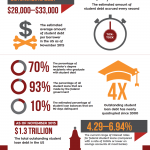As the founder of a leadership development company based on horse wisdom, I am often asked: How are horses qualified to teach humans about conscious leadership and emotional intelligence skills?
A powerful yet relatively unknown secret of the natural world is that horses are models of emotional agility. In fact, they have a four-point method for using emotions as information to move through relationship challenges and environmental changes with confidence and grace.
“The Power of the Herd” author Linda Kohanov discovered this process through her extensive observation of horses and comprehensive research on emotional intelligence. Horses:
- Feel emotion in its purest form
- Get the message behind the emotion
- Change something in response
- Go back to grazing
That fourth point is key. Unlike humans, horses don’t endlessly mull over the details of uncomfortable situations or spin stories; they let the emotion go and get back on task.
These four behaviors demonstrate the innate emotional agility of horses. By emulating horse behavior, humans can align thought, feeling, and action for optimal communication.
What is emotional intelligence, and why is it important in leadership?
Emotional intelligence (EQ) is defined as the capacity to be aware of, control, and express one’s emotions, and to handle relationships judiciously and with empathy.
As far as leadership goes, research shows that EQ is the critical factor that distinguishes top performers from the rest of the pack. In fact, 90 percent of the best leaders score high on EQ tests.
While emotional skills can be learned, they are not generally taught. We learn how to relate and emote from other humans — our parents, friends, teachers, etc. And by the time we enter the workforce, we can be forced into a sink-or-swim scenario.
And while horses innately exhibit EQ through the four steps, we humans have to work at them. The vast majority of us never get past step one. We suppress our emotions and never feel them fully to begin with. We express them in outlandish ways. We wallow in them without ever moving on to step two.
The antidote is to allow our body’s inherent intelligence to inform us — using emotions as an efficient, non-verbal communication system.
How horses roll
Horses are constantly tuned into their bodies. They are 1,000 pounds of 100 percent pure, undiluted perception. Horses notice everything. From the smallest change in their environment to the threat of a predator, it’s on their radar. Nothing escapes the equine eye.
Case in point: Consider Oakley, one of my most talented equine instructors and one of the funniest horses I know.
One day as Oakley and I walked side by side through the tall grass, I suddenly remembered something: Earlier that day I’d placed a stack of chairs near the corral for an upcoming workshop. There was no way Oakley would miss this, and I wondered how he would react.
Sure enough, the moment we rounded the bend, Oakley spotted the chairs and abruptly stopped in his tracks. He jerked his head up in a flash with his eyes wide as saucers and ears standing at attention, “What’s this???”
Luckily it was a stack of chairs and not a moose or a mountain lion — this is Colorado after all — because if it had been, Oakley would’ve taken off like a 747. He had never seen those chairs before, and for all he knew they were some carnivorous beast — the dreaded Rocky Mountain Stacking Chair!
But Oakley didn’t bolt. Why?
We’d been working together for some time, and he trusted me as a leader. He also trusted his own instincts enough to know that these chairs — although new and unfamiliar — were not an immediate threat to his well-being. Perhaps most importantly, I laughed so hard at his big reaction that any tension — his and mine — released immediately, at which point Oakley stretched his neck down to grab a mouthful of grass.
This is a great example of the four-point method at work:
- Oakley felt the emotion in its purest form — in this case, vulnerability.
- He got the message behind the vulnerability: There was a significant change to his comfortable environment. Suddenly chairs appeared in his normally “chair-free” corral.
- Then, he changed something in response to the message – Oakley stopped and sensed the chairs from a distance and realized they didn’t have a heartbeat.
- He then, quite literally, went back to grazing.
He didn’t look around nervously, wondering if there were any other malevolent chairs hiding behind the barn. And I’d be willing to bet he didn’t lose any sleep that night or go back to the herd saying “OMG, we went out to the corral and there were these chairs that appeared out of nowhere! Gosh, I hope there aren’t any more chairs around here. Tomorrow better be chair-free or else I might lose it! Jeez, we all better watch out — what if there’s a table here next week?”
How humans roll
Contrast the emotional behaviors of horses with the emotional behaviors of humans.
Most people either suppress or express their emotions. At work, suppression is often the norm. Yet this behavior in the workplace can fetch a high price tag. According to a VitalSmarts study cited by FastCompany, suppressors can cost companies a lot of money in lost productivity — “an average of $1,500 and an eight-hour workday for every conflict they avoid.” This takes the form of employees doing unnecessary work and engaging in active avoidance of coworkers as well as the crucial conversations they need to have with those coworkers.
The lost productivity can be the least costly outcome of emotional suppression or expression. The physical toll alone is cause for alarm. Left unchecked, emotions can — and do — intensify into rage, mistrust, powerlessness, resentment, apathy, and a host of other unpleasant and potentially dangerous emotions, wreaking havoc on a work environment. Yet many people, it seems, would rather suppress their feelings at work than risk appearing confrontational — or worse, “emotional.”
Here’s an example of how this plays out in a typical workplace scenario.
For the second time this week, your colleague Rachel “borrows” your laptop charger without asking, leaving you with a dead battery and a bump on your head from crawling under your desk looking for it. To add insult to injury, you may have just lost the last hour of work on your document because your computer unexpectedly shut down. You might explode, but since you’re at work, you’re more likely to clam up.
Add this to a host of other annoyances you’ve been suppressing and this situation could escalate, or you could silently simmer. Another option is to…
Channel your inner horse
Because you’ve been practicing the 4-point method, your response is infinitely more productive, and healthier.
1. Your first step is to feel the emotion in its purest form. In this case, anger.
2. Next, you get the message behind the emotion. Anger is about boundaries. Rachel crossed one by taking the charger from your desk without your permission.
3. Change something in response. Take action to establish or restore the boundary: “Rachel, I’m happy to lend you my charger, but please ask me first so I can check to see that my laptop is sufficiently charged.”
Delivery and tone are critical. The boundary must be set in a calm and neutral manner — and this takes practice. The slightest hint of anger in your body language or voice will come through. As tempting as it is to launch into the story about losing your revisions and getting a bump on your head, don’t. It’s not productive.
4. Then, go back to grazing. Get back on task, and move on.
When practiced consistently, this process becomes fluid and second nature. The idea behind the four-point method is to feel the emotion, receive the message, course-correct by changing something, and then get back on task, or go back to grazing.
How masters roll
Knowing others is intelligence
Knowing yourself is true wisdom
Mastering others is strength
Mastering yourself is true power— Lao Tzu
It takes practice and commitment to pursue emotional agility, but in doing so we open our world to deeper, more productive relationships, as well as more advanced leadership roles at work and in life. The rewards — I can say from personal experience — are tremendously gratifying, both professionally and personally. The moment I began using the four-point method, my relationships improved, and work (and life!) became much more enjoyable.
A degree in psychotherapy or months of studying is not necessary to bolster your level of emotional intelligence. Most humans can learn these skills in a weekend — and life itself provides plenty of practice.
Imagine your workplace teeming with emotional masters. The possibilities for collaboration, innovation, and creativity are endless.
As you work toward emotional self-mastery, remember: Learning these skills is advanced work that doesn’t always come naturally to many of us. Luckily, we have our four-legged teachers to guide us to emotional sanity — reminding us to feel emotions in their purest form, get the message behind them, change something in response, and go back to grazing.




